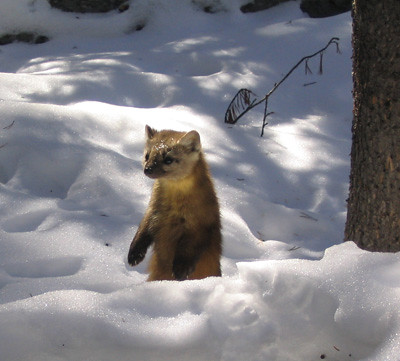
The wily and elusive American marten, which looks like a cross between a mink and a fox, is getting even harder to find according to recent study by the US Forest Service.
The study, Decline in American Marten Occupancy Rates at Sagehen Experimental Forest, California, conducted on the Sagehen, in the Sierra Nevada Mountains, found that since the 1980s marten habitat has decreased by about 25 percent and marten sightings have dropped by nearly 60 percent. These dramatic decreases are thought to be caused by degradation of the wooded areas where they live.
Previous research revealed that marten populations in the northern Sierra and southern Cascades mountain ranges in California had become more fragmented since the early 1900s, but the current work at Sagehen may help explain the environmental reasons for this pattern.
In the early 1900s, the small mammal, which is related to the weasel family, could be found in large areas in the northern Sierra Nevada Mountains. Today, they are isolated and separated. Causes for this species dispersal are unclear, but researchers believe timber harvesting, thinning and the removal of downed woody material on the forest floor may play a part in the population decline.
Researchers recorded marten detections using track plates—long, baited rectangular boxes which martens enter and leave their tracks on contact paper. The data, which was collected in 2007 and 2008, was then compared to survey results from 1980 to 1993.

